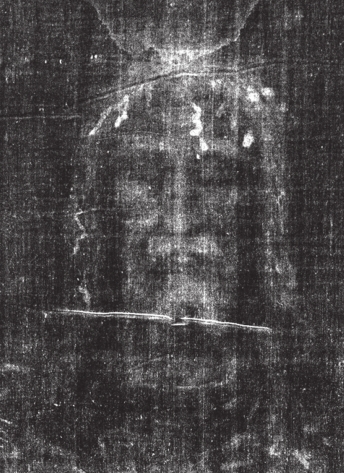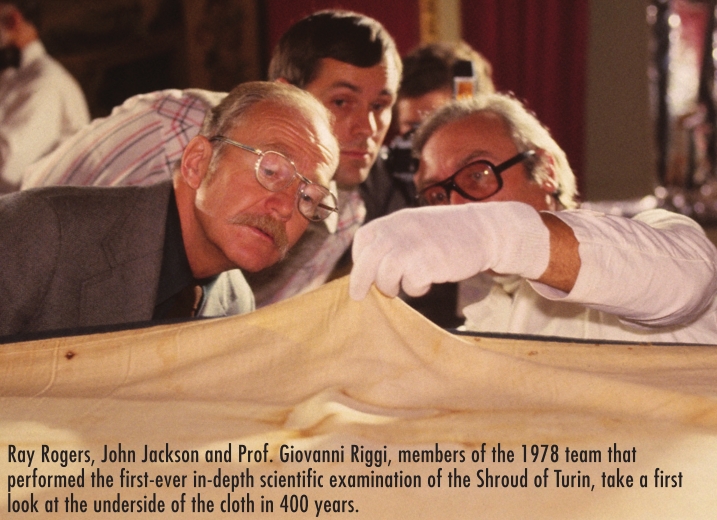THE SHROUD OF TURIN

Symposium recalls research into mysterious relic
In 1978, a team of scientists was granted unprecedented access to the Shroud, the purported burial cloth of Jesus. Over the course of five days, the team of scientists and photographers worked non-stop, using various techniques, including infrared spectrometry and thermography, as well as sticky tape samples to analyze the cloth. The research results were published in peer-reviewed scientific journal articles over the course of four years.
An October event marks the reunion of two of the original STURP members, Dr. John Jackson (nuclear physicist) and Barrie Schwortz, who was the documenting photographer, said Dr. Cheryl White, associate professor of history at Louisiana State University in Shreveport and also a panelist.
Other panelists are Russ Breault, Rebecca Jackson and Father Peter Mangum.
This is the only comprehensive scientific examination ever permitted, White said. “In those 40 years, evidence gleaned from STURP has been the basis of all ongoing research and inquiry about this remarkable and mysterious relic. Still, we cannot reproduce the exact image formation process. It remains a mystery to us even in our age of advanced technologies.”
Schwortz spoke at the cathedral in March. When the first photos were made back in 1898, it was like looking into the face of the Lord, he said. The suffering was intense – swollen cheekbones, beaten from head to toe, a bruised left kneecap and dislocated nasal cartilage. There is evidence that a heavy object was carried across his shoulders after he had been given over 90 lashes by two men, one taller than the other, he said.
His team used a steel table supported with magnets to protect the Shroud. Prior, the Shroud had been “crucified” with thumbtacks. The table was coated with Teflon because X-rays cannot be done through steel, Schwortz said. On the Shroud was a high content of bilirubin, a compound made in the liver when someone is beaten and not given enough water. Bilirubin breaks down red blood cell walls, releasing hemoglobin that will remain red forever.
The team determined the Shroud is not a painting nor photo. Spores from plants around the Dead Sea during Christ’s era are on the Shroud, Schwortz said. The cloth’s weave is from Christ’s era.
Breault has participated in over a dozen international research symposiums and three public exhibitions in Turin. He has appeared in “Mysteries of the Ancient World” and in “Uncovering the Face of Jesus.”
Jackson led the 40-person STURP team. He has a Ph.D. in physics from the U.S. Naval Postgraduate School and a B.A. in religious studies from the College of Santa Fe. Together, he and his wife, Rebecca Jackson, run the Turin Shroud Center of Colorado.
Mangum, rector of the cathedral, attended the Pontifical Gregorian University in Rome, where he received degrees in theology and canon law. In April, he was granted access to the Vatican Secret Archives for further research. Mangum is curator of the new Shroud exhibit at the cathedral.
White has studied the Shroud the entirety of her career, with a special interest in the Shroud’s so-called “Missing Years” of 1204-1355.
“Dr. White is so knowledgeable on all details concerning the Shroud of Turin and makes it so very interesting,” said Barbara Seal, who was in attendance at a recent lecture. “I can hardly wait to see and hear more from her and the other Shroud investigative team members in October. We are very lucky to have this symposium in Shreveport. Father Peter Magnum is the only priest on the 40-member team.”
The events will take place Oct. 11-13, all at the cathedral. On Thursday, Breault will present “CSI Jerusalem.” He makes use of more than 200 images unfolding like an investigation. This free presentation will begin at 6 p.m.
On Oct. 12, there will be a ticketed dinner and panel discussion with all six Shroud experts, the first of its kind. Tickets are $50 and may be purchased from www. sjbcathedral.org.
The Jacksons will present on the Shroud of Turin Research Project Oct. 13 at 9 a.m. Following this free presentation, visitors will be able to peruse the exhibit at St. John’s.
“Over the years, I have read a lot about the Shroud,” said Joe Littlejohn. “I believe that more people should try to educate themselves regarding this phenomena. Also, Father Mangum has done fantastic work to increase understanding among local citizens to cultivate their love for Jesus and their familiarity with Jesus Christ.”
“I can only imagine the walk in time with Jesus these researchers must have felt as they gently looked at and worked with this beautiful article of material that research shows touched our Savior before he rose again and saved us all,” said Donna Haynes. “What a sacred study!” “Before St. John’s got the replica of the Shroud and hosted all of the events and displayed the artifacts, I knew very little about it,” said Margaret Love. “I think it is just another way for us to dig deep into our faith and believe our Lord has walked before us on this earth. I hope to see the real Shroud one day.”
– Mary Ann Van Osdell

MORE INFORMATION:
The Cathedral of St. John Berchmans will host a three-day event Oct. 11-13 in celebration of the 40th anniversary of the Shroud of Turin Research Project (STURP) conducted in 1978 in Turin, Italy.
